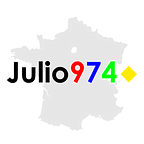The game of GIPF was created by Kris Burm and released in 1998. If you’re reading this, you probably know what it is. What I noticed with the GIPF project games, is that all their boards have coordinates systems. So I decided to do something with it.
There is already a working notation for GIPF, detailed on the official website. But I don’t think it’s really efficient and adapted. A single piece added can go from just ‘e2’ to ‘e1-e4’ to ‘g1-c3;x’ (and in long notation: ‘g1-c3;xc2,d3,e4,f4,g4*’), or even longer. So I had the idea to create another, simpler notation.
Placing a piece
If you just place a piece without pushing another, just put the coordinates for where it lands (for example, ‘e2’). If you place a Gipf piece, add an uppercase G in front of it (for example, ‘Ge8’).
If you place a piece pushing another (or others), first put the coordinates of the dot you placed it on. Then, either:
- If the dot only has 1 possible direction of pushing, just write the original dot’s coords (for example, ‘e1’ for a piece that will end up in e2);
- If you push it in a vertical direction, OR if you place it on one of the side dots (a2, a3, a4, i2, i3, i4) that will keep the same row number (for example, a2>b2, a4>b4, i3>h3, etc.), just write the original dot’s coords (for example, ‘c1’ for a piece that will end up in c2, or ‘i3’ for a piece that will end up in h3).
- If you push it in the other direction, write it followed with an asterisk (for example, ‘c1*’ for a piece that will end up in d2, or ‘a4*’ for a piece that will end up in b5. The asterisk is pronounced “star”. I’m still not settled on the symbol, I might change it).
Capturing pieces
If you just form a row of regular pieces, you can put an X just after the coordinates of the piece placed (it’s recommanded for clarity, but not essential) (for the left example below, you can write ‘b1*’ or ‘b1*X’). If you capture at least one Gipf piece or multiple crossing rows are formed, you have to put an X (Gipf pieces remaining on the board are ignored).
For each Gipf piece captured (including allied pieces), put their coordinates after the X (for the center example above, if White chooses to keep all their Gipf pieces, ‘b1*Xg4’).
If multiple capturing rows are crossing, the player chooses which one to remove. To make sure there is no ambiguity in the notation, indicate which row or column it is on (descending rows are written with their leftmost dot’s number, ascending/rising rows are written with their leftmost dot’s number or letter followed with * (‘Xa*’ and ‘X1*’ are equivalent)) (for the right example above, White can choose to remove the row h2-e5, written ‘f1X5’, or the row e4-h4, written ‘f1Xb*’). Gipf pieces removed along it are written right after (for example, if White chose for some reason to remove both of their Gipf pieces in the row, it would be written ‘f1X5g3e5’ (while the official notation would write it ‘f1-f5;xh2,Gg3,f4,Ge5’)).
Everything around it
(this is not part of the actual notation, it is rather the way of documenting it)
At the start of a game, write ‘Short-cut’, ‘Basic’, or ‘Tournament’ according to which ruleset you use. You can also write ‘White-Black’ or ‘Black-White’ to give more information about the player order.
Each turn is written in the form:
<turn n°>. <first player> <second player>
For example:
1. Ge8 Gd8*
Annotations are chess’, with ‘!’ for good move, ‘!!’ for brilliant move, ‘?’ for bad move, ‘??’ for gaffe, ‘!?’ for interesting move, ‘?!’ for dubious move.
Same for positions, but the order of symbols is in the players’ order (for example, if Black plays first, +/- means Black has the advantage.
The game’s end is simply written ‘1–0’ if the first player wins (regardless of black-white color), ‘0–1’ if the second player wins, and ‘½–½’ if the players choose to draw (though it’s not possible in the usual rules).
Example
Translating the example game:
Tournament White-Black
1. Ge8 Gd8*
2. Ge9 Gf8*
3. Ge9 Gd8*
4. g7* f8*
5. f8 c7*
6. g7* e9
7. b6*X c7*
8. g7* c7*
9. h6* b6*
10. h6*X b3
11. b5 g7*X
12. a5 a2*
13. a5X e2
14. f2 d1*
15. h1* d1*
16. f1 i1*
17. g6 g1*Xf6
18. h6 a3*
19. h6*Xc4 e8
20. f1* c6
21. c7 1–0
